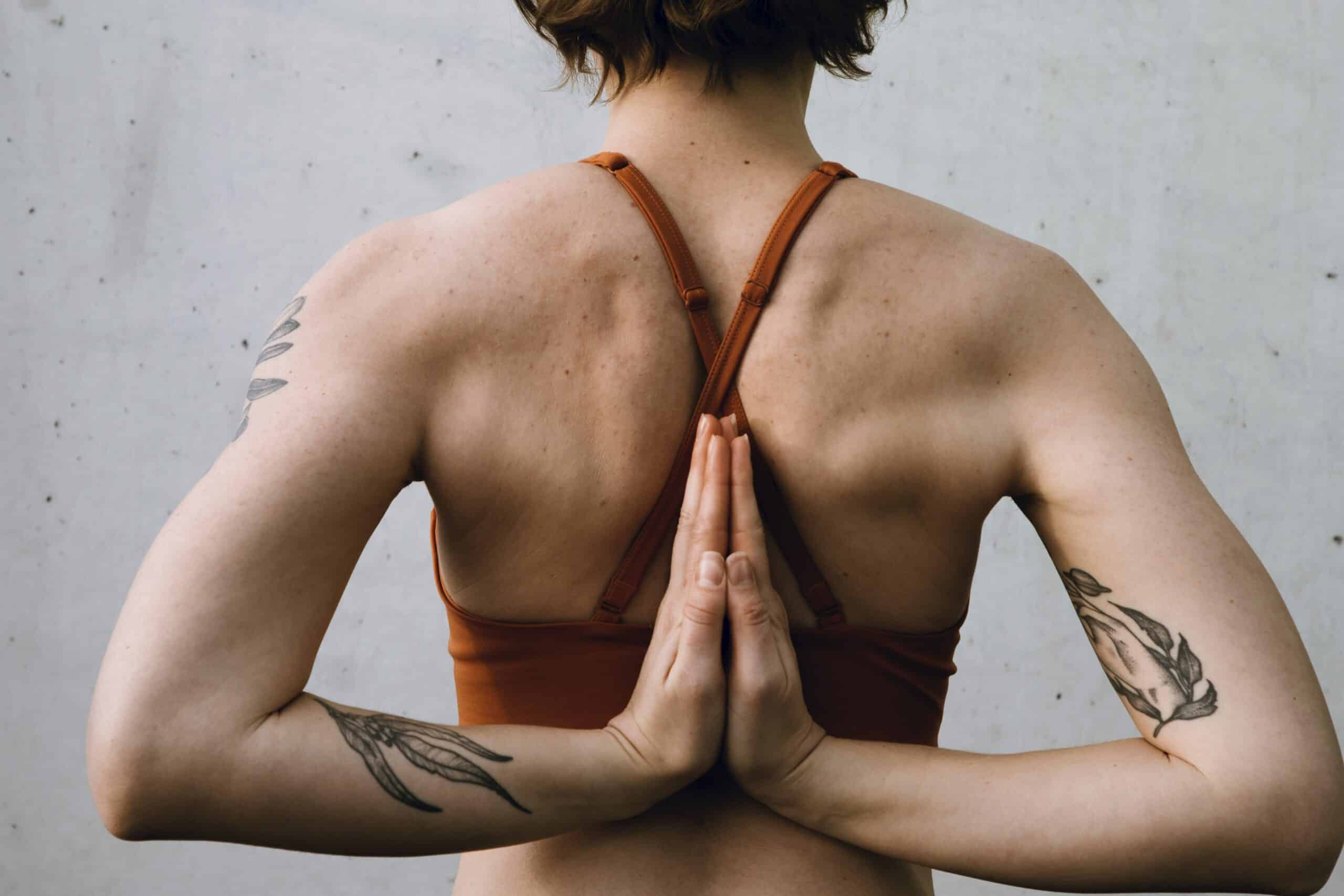The 8 Limbs of Yoga : How They are Relevant Today | By Carrie Lehtonen
In the United States, yoga is often thought of as a form of exercise, but there’s much more to this ancient practice than the asanas (physical postures). In the Yoga Sutras, Patanjali presented the eight-limbed path of yoga, which covers everything from how one relates with others to achieving an enlightened state. Implementing these steps is as important today as it was over 2,000 years ago.
The more we integrate the eight limbs into our lives, the higher our chance for achieving inner peace, and who can’t use a little more peace? Following the eight-limbed path can help you to face and overcome challenges. By practicing these yogic principles, you can develop resiliency and feel more connected to the world around you.
The first two limbs, the yamas and niyamas (restraints and observances, respectively) guide us in our interactions with others and our daily activities.
The five yamas may seem outdated when interpreted too literally, but when you dig deeper into the meaning of each, they have something to teach us about living in harmony and balance.
- Ahimsa (non-harming): In addition to not causing physical harm, ahimsa relates to compassion in our thoughts about ourselves and others. When we live in this way, it encourages others to live peacefully too.
- Satya (truthfulness): Reacting in the moment on an emotional level is responding from a place of fear and conditioning rather than truth. We can move closer to a state of truth when we slow down, take a couple of deep breaths and observe things as they really are.
- Asteya (non-stealing): Desire and greed arise when we feel a sense of lack. This may lead to buying more than we need to try to fill the gap, leaving less for someone else. This principle teaches us to appreciate what we have and live from a place of abundance.
- Brahmacharya (right use of energy): Consider how you use and direct your energy. Do you spend energy trying to impress others or worrying about things that don’t serve you? Our society tends to put emphasis on how busy we should be, but filling your schedule may leave you feeling empty. What activities or daily tasks drain your energy? Be more aware of your body and what you need to thrive, and let go of the rest.
- Aparigraha (non-greed or non-hoarding): The final yama teaches us to take and keep only what we need, to live simply and to not cling to a certain outcome. When we hoard possessions or get attached to a positive feeling or experience, we weigh ourselves down with physical and energetic baggage.
The five niyamas can help us develop self-awareness, and they can bring more joy into our daily lives.
- Saucha (purity or cleanliness): This niyama goes beyond keeping our physical body clean to address purity in food, thoughts and environment. This might mean limiting processed foods that contain preservatives, additives and pesticides. Pay attention to your thoughts and notice when you’re being judgmental, negative or unkind.
- Santosha (contentment): This requiresseeing and accepting the world as it is and letting go of perfection. Consider how often the phrase I’ll be happy when… crosses your mind. Practice accepting and appreciating what you already have. After all, peace and happiness are already within you. Experiences and emotions come and go, but your true self is unchanging. Let go of who you think you’re supposed to be or waiting until you’re ‘good enough,’ and recognize that you’re whole as you are.
- Tapas (discipline):This has to do with having self-discipline, will power and passion. When we step outside of our comfort zone, take on new challenges and face our fears, we can get things done and experience transformation.
- Svadhyaya (study of the self): This can mean paying attention on another level, having a beginner’s mind and being self-aware. Take an honest look at yourself to recognize whether any of your habits or actions are harmful to your wellbeing or driven by ego.
- Isvara Pranidhana (surrender to a higher power): In practice, surrendering can be challenging because our ego likes to have control. When we learn to trust in the universe and choose to surrender, or have faith in something greater, it gives us the freedom to express ourselves as we are.
The third limb, asana, is the one that many associate with the term “yoga.” The physical postures were originally created as a means to prepare the body for sitting in meditation, but today, the asanas have become the primary focus of yoga practice. Through asana we can develop the habit of discipline and the ability to concentrate, which supports us in the later stages along the eight-limbed path.
Next, pranayama (breath control) involves performing breathing exercises to get more attuned to the vital life force (prana) circulating in and around the body. Pranayama is a means to elevate this energy to prolong life. Some teachers incorporate pranayama into their asana classes, but it can be a stand-alone practice. Pranayama has been shown to help reduce stress, anxiety and depression because controlled breathing impacts the parasympathetic nervous system. Taking slow, deep breaths can help calm you when you’re in a stressful situation.
The first four stages of yoga prepare us for the second half of the journey, which deals with the senses, the mind and attaining a higher state of consciousness. Step five, pratyahara, is generally translated as “withdrawal of the senses.” When we engage in pratyahara, we gain some level of control over our unruly senses which helps us to become more attune to our inner self.
How does pratyahara play out in the modern world? Most of us suffer from sensory overload and overstimulation. We’re constantly bombarded with information, loud noises, bright colors, the ding of notifications from our smartphones and messages encouraging us to consume more. We have become so accustomed to sensory activity that we don’t know how to quiet our minds. Practicing pratyahara involves taking some time away from outside inputs and can include fasting for periods of time, spending time in silence, focusing on the natural world or doing a visualization exercise.
Pratyahara prepares us for the next step, dharana (mental concentration), by withdrawing our attention from outward distractions. Dharana involves focusing your attention on one thing. This practice is often used in meditation. For example, the focal point might be your breath, the flame of a candle or a mantra that you repeat silently. However, you don’t have to be sitting on a meditation pillow to find dharana. You may have heard athletes talk about ‘being in the zone’ during a game — that is also dharana. The same is true for a musician or an artist who is completely focused on their craft. The more you can tune out the distractions and bring your focus to one thing, the better prepared you’ll be to move to the final two steps on the eight-limbed path.
Dhyana (contemplation) means being completely present, and leads to a state of atman, which can be described as your higher self or soul. In this state, time seems to stand still. While dhyana is often used interchangeably with meditation, meditation is the pathway to reach the state of dhyana. During meditation, the space between your thoughts is the gap. Dhyana can be described as slipping into the gap or glimpsing the soul. This is the space of infinite possibilities.
The final limb, samadhi, is considered to be the state in which individual and universal consciousness unite. Samadhi is the culmination of the meditation process. It’s the mind in its most concentrated state — when awareness of the meditator, process of meditation and the object of meditation all merge into one. Samadhi can’t be forced or willed into being. The best approach is to create the conditions for samadhi, and then simply allow it to occur. You create the environment by practicing the first seven limbs on the yogic path.
In this final state, you move beyond the intellect and into the tranquility of a settled or pure mind. This is often described as a state of blissfulness and joyful peace. People report having little to no awareness of the physical body, seeing light while the eyes are closed or a loss of all sense of self, time and space. While some might use the term enlightenment, there is a difference. Enlightenment typically refers to a lasting state of transcending the mind, but samadhi is a temporary state. This temporary state may last for seconds, minutes or hours.
In today’s world of constant distraction, the stress of high expectations, trying to find balance in hybrid work environments, increasing anxiety and climate change-induced extreme weather conditions, we can all use a little help in finding peace, happiness and bliss. The eight-limbed path of yoga is one tool that can cultivate self-awareness, contentment and joy.
CARRIE LEHTONEN
Founder of Firefly Community LLC
Registered Yoga Teacher and Educator (E-RYT500), Holistic Health Practitioner, Writer
Tough Cuties are premium quality merino wool hiking socks made for women, for women, created sustainably in [...]

Subscribe to Our Tribe
Stay up to date with Y+L News, Events and special announcements.











